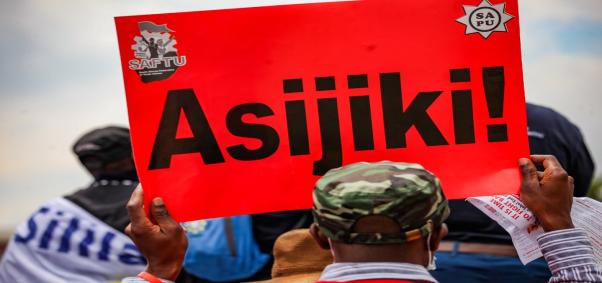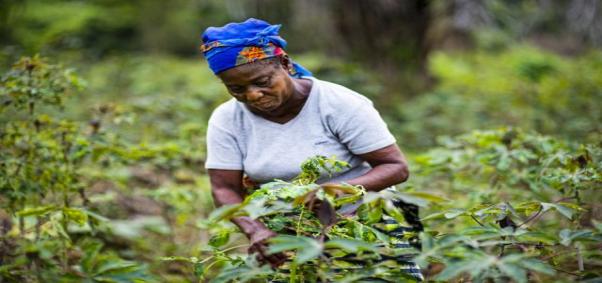
This article was published in The Huffington Post on October 10, 2015.
Building a Brighter Future — Powered by Renewable Energy
By Helen Mountford
Helen Mountford is Programme Director for the New Climate Economy project.
It is impossible to succeed in today’s economy without access to energy. But for an estimated 1.3 billion people, mostly in the developing world, electric power is still out of reach. Even among those with energy access, many still face unreliable service and regular blackouts. This is why it is so important that we push for Goal 7 of the proposed Sustainable Development Goals: “ensure access to affordable, reliable, sustainable, and modern energy for all.”
Our current energy system, largely based on fossil fuels, not only leaves out vast swaths of the world’s population but is also actively harmful to human health. Globally, an estimated 3.7 million people die prematurely each year due to air pollution, much of it related to fossil fuels. The cost of premature deaths resulting from air pollution amounts to 4 percent of GDP on average in the 15 largest economies. In India, it is around six percent and in China it is more than 10 percent. Yet, 40 percent of the world’s electricity still comes from coal, one of the most polluting fuels. And in 2013, the world spent around $600 billion on fossil-fuel subsidies, straining public finances, distorting investment and consumption choices, and fueling dangerous climate change.
Thankfully, the economics of energy are shifting. In 2013, for the first time, the world added more low-carbon electricity capacity than fossil-fuel capacity. It is becoming clear that renewables and enhanced energy efficiency, not fossil fuels, will be the solutions to energy poverty.
The barriers to energy access, which just a few years ago seemed insurmountable, are rapidly eroding. The tumbling costs of renewable energy are opening up new possibilities for clean, reliable energy for those who previously couldn’t afford it. Solar-photovoltaic modules are 80 percent cheaper than they were in 2008. As prices continue to fall and technologies mature, each dollar invested in renewables buys more capacity than ever. US$270 billion invested in renewables in 2014 bought more than 36 percent more capacity than the same amount spent in 2011.
Innovation in renewable technology is especially important for rural communities far from the energy grid. In the past, they had to rely on kerosene, which is both expensive and dangerous for health. But off-grid renewable energy is rapidly emerging as a viable and cheap alternative. According to SolarAid, which sells portable solar systems for homes in Africa, homes that replace kerosene with a solar light can save on average US$85 a year. The money saved tends to be spent on healthcare, education and better food.
In India, where more than 300 million people don’t have access to power, off-grid energy is becoming a huge market for businesses and is providing major social and environmental benefits. Some studies suggest that solar home systems added more than US$21 million to the rural Indian economy in 2014, allowing one billion extra hours of studying each year for more than 2.5 million children. Prime Minister Narendra Modi’s government has increased the previous national solar targets by five times, to 100 GW by 2020.
Methods of distributing renewable power to rural communities are becoming increasingly creative. In East Africa, a company called M-KOPA combines solar power and cell-phone technology to bring affordable energy to off-grid villages. Customers pay a small deposit for a solar-home system, and then pay back the balance over time through a widely used mobile platform, reducing transport and transaction costs. The solar units are cheaper and cleaner than kerosene, and once they’re fully paid for — after about a year — the electricity is completely free. More than 200,000 homes in Kenya, Tanzania, and Uganda now use M-KOPA’s solar systems.
For fast-growing countries trying to achieve universal energy access with limited resources, energy-efficiency investments can also be extremely helpful. By reducing demand for energy, energy efficiency can be the “first fuel.” And support is at hand. Sustainable Energy for All has identified at least 168 institutions and 145 initiatives around the world that focus on energy efficiency. For example, through UNEP’s “en.lighten” initiative, more than 60 countries have committed to transition away from inefficient lighting by 2016.
Ensuring universal-energy access with renewable power will be a win itself, but it will also contribute to the other Sustainable Development Goals. It will play a part in ending poverty (Goal 1) by saving rural communities the costs of kerosene and allowing more people to participate in the modern economy. It will help ensure healthy lives (Goal 3) by reducing air pollution. And finally, it will play a major role in combating climate change (Goal 13). The latest New Climate Economy report finds that investing in clean energy and improving energy efficiency could reduce global greenhouse gas emissions by an estimated 12.2 Gigatonnes of CO2 equivalent each year by 2030, more than the current annual emissions of the United States and the European Union combined.
New companies and initiatives like SolarAid, M-KOPA, and en.lighten are showing that it’s possible to expand energy access in a sustainable way. Let’s accelerate the momentum and build a brighter future.






